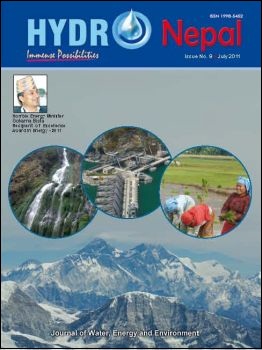Rural Drinking Water Quality Status in Central Development Region, Nepal: A Comparative Study of Spring water and Ground water
DOI:
https://doi.org/10.3126/hn.v9i0.7074Keywords:
Rural Drinking Water Quality, Spring water, Ground Water, NDWS (National Drinking Water Standards), NepalAbstract
This study assesses the rural drinking water quality status in Central Development Region of Nepal. With a total of 250 samples collected from 15 districts of the region, drinking water quality of spring water and ground water representing hill and Terai (lowland) regions were tested and compared for their physicochemical parameters and faecal coliform contamination.
None of the spring samples as well as ground water samples violated National Drinking Water Standards (NDWS) for electrical conductivity (EC), total dissolved solids (TDS), total suspended solids (TSS), appearance, chloride and nitrate. Similarly none violated the standards for total hardness (TH) indicating soft nature of the water. The spring samples were within the NDWS for manganese (Mn) and iron (Fe) whereas 15.4% and 39.0% of the ground water samples violated the standards for manganese and iron, respectively. Gravity water is found to be more alkaline than ground water. Faecal coliforms were the most problematic in both types of sources followed by Ammonia (NH3) and pH in spring sources and by iron, Mn, pH and ammonia in ground water sources, respectively. Spring sources were more contaminated by bacteria than ground water sources. Correlation and regression analysis revealed highly significant correlations between EC and TDS (r=0.979) and between CaH and TH (r=0.988) in ground water suggesting that aquifer chemistry of ground water to be mainly controlled by EC, TDS, TH, and CaH. Similarly, highly significant correlations were found between the following pairs in gravity water: EC and TDS (r=0.983), TA and TDS(r=0.853), CaH and TDS (r=0.912), TH and TDS (r=0.955), EC and CaH (r=0.898), and between CaH and TH (r=0.951).
DOI: http://dx.doi.org/10.3126/hn.v9i0.7074
Hydro Nepal Vol.9 July 2011 52-56
Downloads
Downloads
Published
How to Cite
Issue
Section
License
The copyright of the articles and papers published is held by HYDRO Nepal Journal.
The views and interpretation in this journal are those of author(s), and HYDRO Nepal does not bear any responsibility for the views expressed by authors in the journal.




